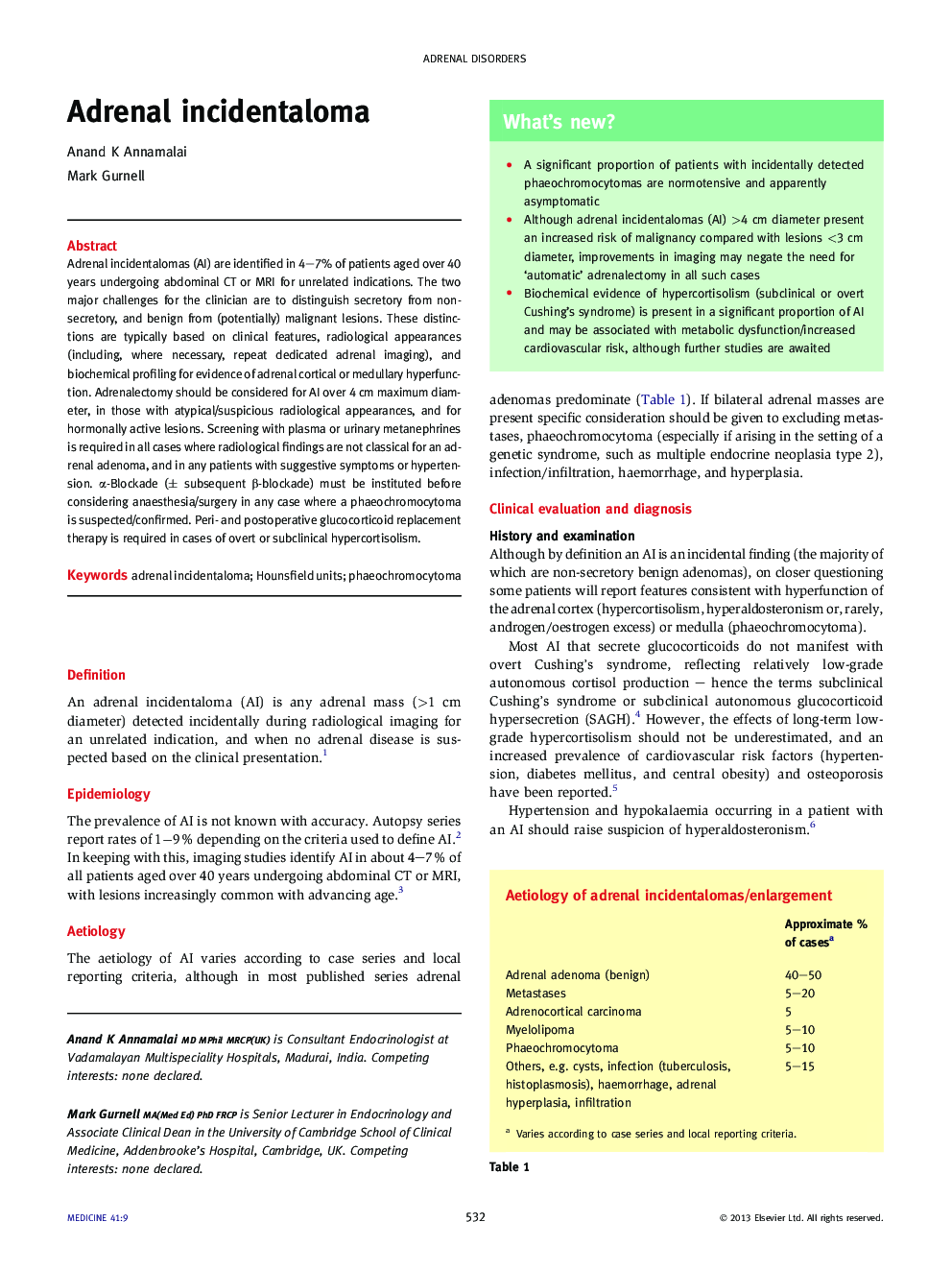| Article ID | Journal | Published Year | Pages | File Type |
|---|---|---|---|---|
| 3807088 | Medicine | 2013 | 4 Pages |
Adrenal incidentalomas (AI) are identified in 4–7% of patients aged over 40 years undergoing abdominal CT or MRI for unrelated indications. The two major challenges for the clinician are to distinguish secretory from non-secretory, and benign from (potentially) malignant lesions. These distinctions are typically based on clinical features, radiological appearances (including, where necessary, repeat dedicated adrenal imaging), and biochemical profiling for evidence of adrenal cortical or medullary hyperfunction. Adrenalectomy should be considered for AI over 4 cm maximum diameter, in those with atypical/suspicious radiological appearances, and for hormonally active lesions. Screening with plasma or urinary metanephrines is required in all cases where radiological findings are not classical for an adrenal adenoma, and in any patients with suggestive symptoms or hypertension. α-Blockade (± subsequent β-blockade) must be instituted before considering anaesthesia/surgery in any case where a phaeochromocytoma is suspected/confirmed. Peri- and postoperative glucocorticoid replacement therapy is required in cases of overt or subclinical hypercortisolism.
